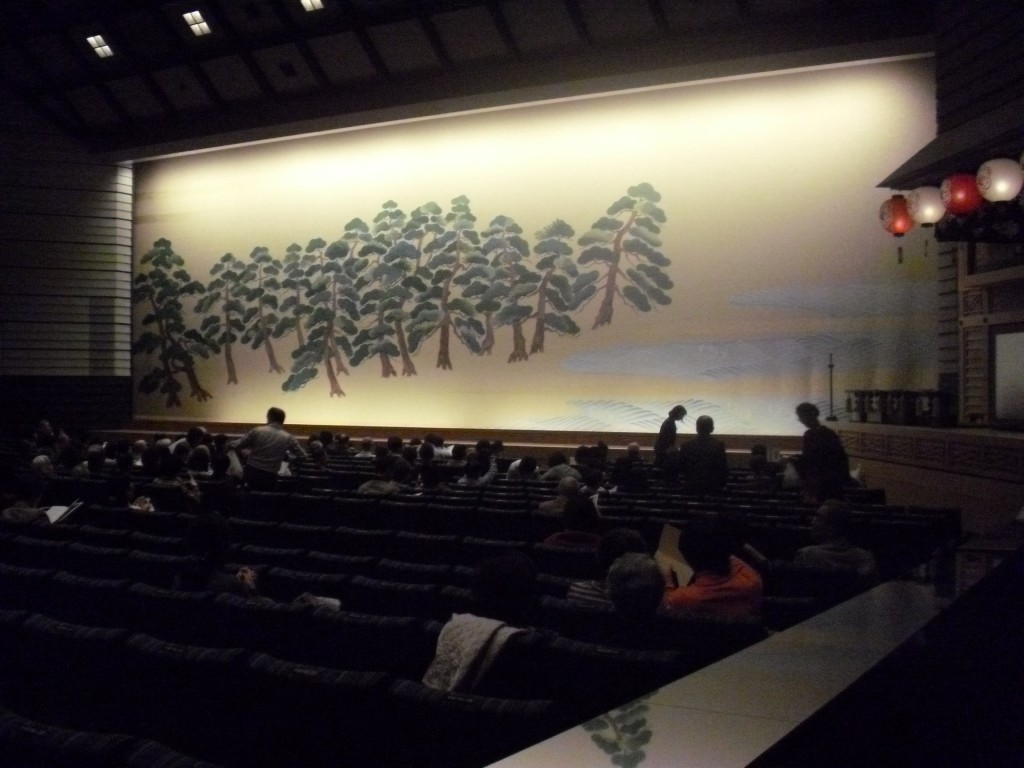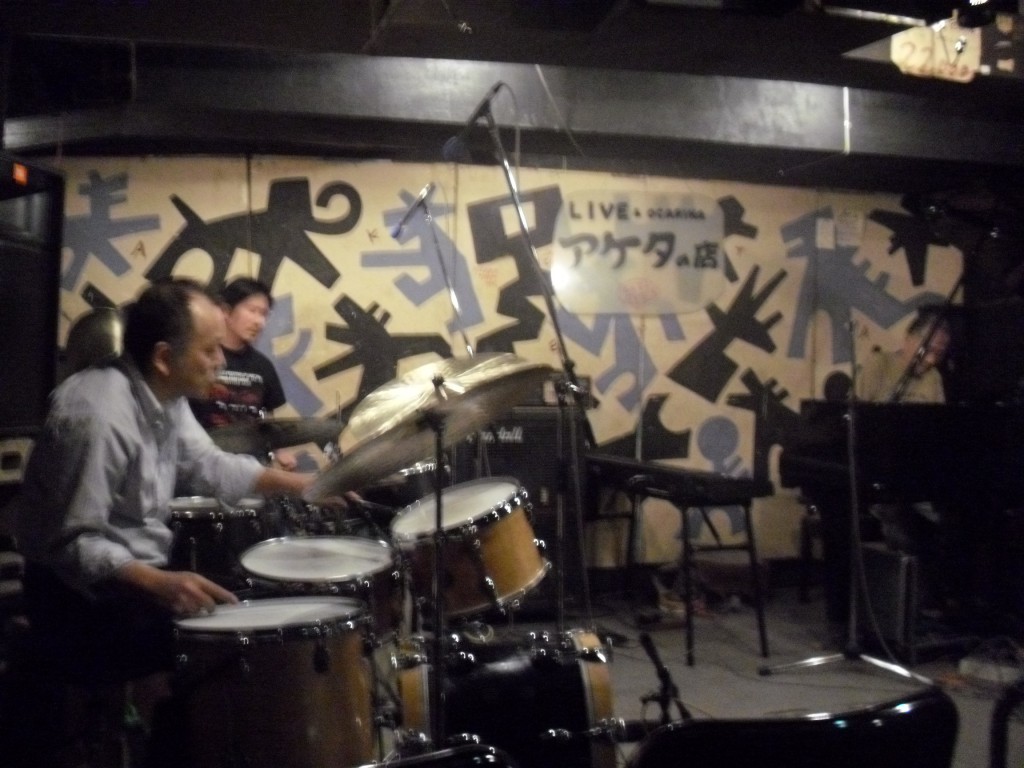A little late, but what the hell:
 So, I spent two weeks in Japan at the end of October and the beginning of November. Besides the culinary adventures (most joyously at a 90-minute all-you-can-eat deep-fry-it-yourself-at-your-table joint in Osaka, and most weirdly involving pig heart and some kind of pickled, fermented yuzu fruit), the trip provided some fodder for thoughts about the arts and policy from an American perspective.
So, I spent two weeks in Japan at the end of October and the beginning of November. Besides the culinary adventures (most joyously at a 90-minute all-you-can-eat deep-fry-it-yourself-at-your-table joint in Osaka, and most weirdly involving pig heart and some kind of pickled, fermented yuzu fruit), the trip provided some fodder for thoughts about the arts and policy from an American perspective.
I’m sure I’m like many people in that, as a tourist, I’m liable to seek out all kinds of arts and culture experiences that I’m too busy for or wouldn’t bother with the rest of the time. For me, this is especially true with museums and historical sites, since — and this is a dark, dark secret so please don’t tell anyone if I ever become a grantmaker — I’m not really a museum person. There, I said it. It is the rare museum that holds my interest for more than about five minutes (especially if the exhibits are of art from before, oh, about 1950). But you know, you go to a foreign country, and your first thought is, “well, what is there to do there?” and so you pick up a guidebook and what do they list but museum, museum, park, historical site, aquarium, museum, and maybe some places to eat. Right? And you’ve got a whole day to fill and all of the sudden you’re planning whole itineraries around this stuff.
So, this is all to say that I visited a lot of temples in Japan. A lot a lot a lot a lot. (My SO wanted to visit even more, but my cause was helped by torrential rains on several days we were there. Thanks, old man!) Anyway, one of the ones we saw was Rinnoji, in the picturesque small town north of Tokyo known as Nikko. Upon our arrival, we were surprised to learn that one of the temples in the complex was under construction (you can see the actual temple peeking out to the left of the photo):

What we were really surprised by is this: if our reading of the signs outside is correct, they actually plan to leave it this way. That is, the encasement they’re building isn’t temporary – they’re making it into an indoor structure in order to save it (that’s why the outside has the life-size picture of the temple on it). Now, I haven’t been able to confirm this with a web source, so I could be wrong about the plan, but this seems like pretty unorthodox preservation strategy, no? Anyone know of similar efforts here in the United States?
A couple of days later, we hit up a performance at the National Bunraku Theatre of Japan in Osaka. Bunraku is acted out through a combination of extremely elaborate puppets that require as many as three people and years of training to operate, a shamisen player, and one or more narrators who voice the puppets in a kind of recitative-like half-song. Everything is highly coordinated and the performers will switch out between scenes since the narration in particular is quite physically demanding.
 Bunraku is not the most, uh, accessible tourist experience imaginable. The performances are in old Japanese, so even my proficient half-Japanese girlfriend and her brother were at a loss to follow the dialogue. Like in kabuki, the characters often have to offer a minutes-long soliloquy before dying (which happens a lot in these things) or moving other plot lines along, making for a slow-paced event. The performances are expensive: 5800 yen for a program, which is like $70. And they are long – the one we attended started at 4pm and was between four and five hours overall. Another program was offered the same day at 11am, and they were clearly intended (for the full experience) to be consumed as a set.
Bunraku is not the most, uh, accessible tourist experience imaginable. The performances are in old Japanese, so even my proficient half-Japanese girlfriend and her brother were at a loss to follow the dialogue. Like in kabuki, the characters often have to offer a minutes-long soliloquy before dying (which happens a lot in these things) or moving other plot lines along, making for a slow-paced event. The performances are expensive: 5800 yen for a program, which is like $70. And they are long – the one we attended started at 4pm and was between four and five hours overall. Another program was offered the same day at 11am, and they were clearly intended (for the full experience) to be consumed as a set.
But the National Theatre did something to mitigate all of these factors for the English-speaking tourist: they offered single-act tickets for a mere 1000 yen. A single act lasts about 1-1.5 hours, a perfect amount of time to get a taste and move on. Single-act ticket holders are given special nosebleed seats in the back so that they won’t disturb the other theatergoers, and are seated by the ushers after the other attendees have already taken their seats. It sounds like second-class treatment, but let me tell you, we were grateful to have the opportunity to get a cheap, low-commitment, and yet fully authentic taste of traditional performing arts in Japan.
I was thinking about this from the perspective of some of the audience development conversations we have about the arts. I figure my orientation to bunraku was roughly equivalent to that of someone unfamiliar with opera coming to see Marriage of Figaro. It was a strange, foreign experience, and even though I had sought it out and enjoyed it (to an extent) I doubt if I will ever see bunraku again. However, I might not have seen it at all if it were not for those single-act tickets.
 Finally, for a cultural experience that wasn’t all that different in Japan, we sought out some experimental jazz at the Aketa No Mise club in the Nishi-Ogikubo neighborhood of Tokyo. One of my formative musical experiences was seeing a totally obscure Japanese power trio called Altered States perform two hours of 100% improvised jazz/rock fusion at a record store in The Netherlands in 2001. (Seriously, check them out, they’re amazing and so is everything else in this video.) Unfortunately, Altered States wasn’t performing while I was in Japan, so we set off to Aketa instead to see the house band, a trio with two drummers and (get this) a pianist doubling on ocarina. And when I say doubling, I mean doubling: at several points he actually played two ocarinas at the same time. Crazy shit. Anyway, just like in the US, there were like 7 people at the show – the only difference is that Japanese cover charges for jazz, even at the underground places, are insanely expensive: we paid 2500 yen (over $30) for this one, and many shows will cost you the equivalent of $50 or more. I guess if you’re going to get only a handful of audience members either way, you might as well milk them for cash!
Finally, for a cultural experience that wasn’t all that different in Japan, we sought out some experimental jazz at the Aketa No Mise club in the Nishi-Ogikubo neighborhood of Tokyo. One of my formative musical experiences was seeing a totally obscure Japanese power trio called Altered States perform two hours of 100% improvised jazz/rock fusion at a record store in The Netherlands in 2001. (Seriously, check them out, they’re amazing and so is everything else in this video.) Unfortunately, Altered States wasn’t performing while I was in Japan, so we set off to Aketa instead to see the house band, a trio with two drummers and (get this) a pianist doubling on ocarina. And when I say doubling, I mean doubling: at several points he actually played two ocarinas at the same time. Crazy shit. Anyway, just like in the US, there were like 7 people at the show – the only difference is that Japanese cover charges for jazz, even at the underground places, are insanely expensive: we paid 2500 yen (over $30) for this one, and many shows will cost you the equivalent of $50 or more. I guess if you’re going to get only a handful of audience members either way, you might as well milk them for cash!
(For more weird Japanese jazz at Aketa, taken from a show about a month prior to the one we saw, check this out:)